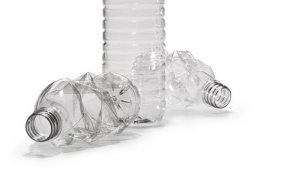
Unifi announces new sustainable fibre
Posidonia seagrass is being targeted as a potential reinforcement for composites by the Spanish research institute Aitex and its partners.

8th August 2018
Innovation in Textiles
|
UK
 Posidonia seagrass is being targeted as a potential reinforcement for composites by the Spanish research institute Aitex and its partners.
Posidonia seagrass is being targeted as a potential reinforcement for composites by the Spanish research institute Aitex and its partners.
It represents the latest addition to the long list of alternative natural plants that are being explored for useful fibre properties and turned into nonwoven fabrics, as outlined in the current newsletter from needle specialist Groz-Beckert that can be read here.
Posidonia and algae accumulations on beaches and along the coastlines of the Mediterranean pose a specific environmental problem, explains Oscar Calvo, who is involved in chemical and materials engineering R&D at Aitex in Alicante. The biomass releases unpleasant odours, promotes mosquitoes and as it rots can be poisonous to birds and animals.
At present, the waste is generally left on the beaches over the winter and collected before summer. It is managed as urban solid waste and either deposited to landfill or incinerated. Sand is also removed with the waste making new sand deposits necessary.
As part of its EU-funded Seamatter project, Aitex has been exploring options for the transport and storage of the waste and its washing, drying and sieving for the separation of non-useful materials.
It has subsequently fiberized the Posidonia into fibres in a range of sizes and its engineers employed wet-laid nonwoven technology to turn it into fabrics.
Using 10% PLA fibres for the thermobonding, 100-300gsm nonwovens consisting of 80% Posidonia waste and 10% lyocell were produced, and also 300gsm fabrics of 70% Posidonia and 20% para-aramid.
These were then turned into both thermoplastic and thermoset composites by thermocompression moulding, VARTM resin infusion and hand lay-up. Demonstrator parts aimed at the construction industry include acoustic insulation panels, tiles, decorative rafters and mouldings.
Aitex believes the Seamatter project has demonstrated a feasible and attractive new option for the design of sustainable composites and says its project could be expanded with support from the institutions responsible for the management of beaches and private partners.
The Seamatter project was one of several Aitex has been involved in as part of the greater EUR 2.1 million Reset Interreg Europe project, which began in 2016 and runs to 2021. Reset aims to change the way European Structural Fund policies and programmes are implemented in the partners’ regions.
Its key objective is to improve regional policies and promote a more sustainable approach to production in the textile and clothing sector. This includes the creation, management and enhancement of the research and development and innovation infrastructures required to develop greener and more sustainable textile and clothing products and processes which will different these regions from their competitors.

Reset addresses 6 key themes:
The strategy behind reset is that the textile and clothing sector in Europe includes 173,000 companies with a turnover of EUR 165 billion, employing 1.87 million people and its competitiveness is linked to innovation and technology development and more recently, sustainability and environmentally-friendly production.
New, sustainable approaches are being developed and adopted by textile and clothing companies across the EU and informing stakeholders and policy makers about these good practices would allow those solutions to be adopted in other regions.

Business intelligence for the fibre, textiles and apparel industries: technologies, innovations, markets, investments, trade policy, sourcing, strategy...
Find out more